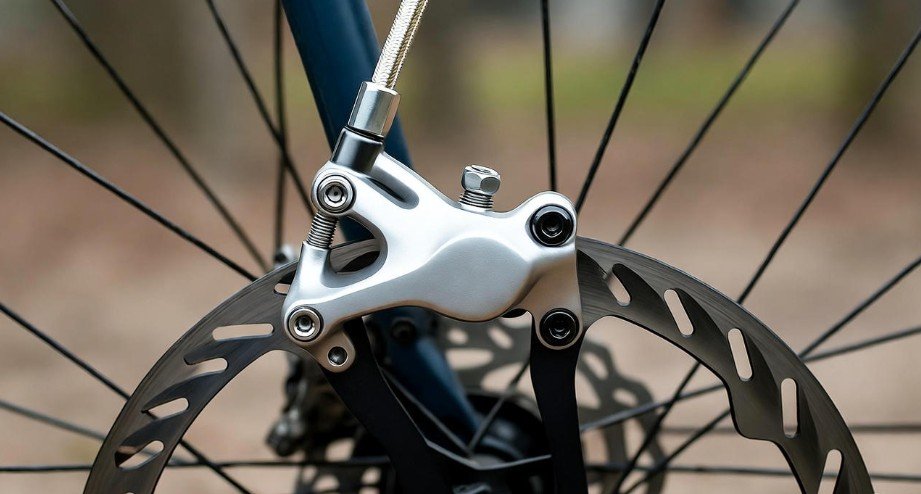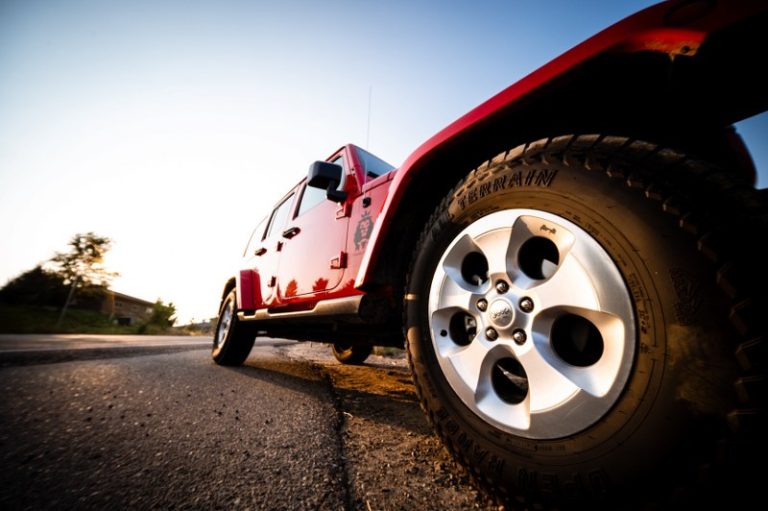Disc Brake Kit For Cycle: Upgrade Your Ride

Upgrade your cycle with a disc brake kit for superior stopping power and control. This guide offers a beginner-friendly, step-by-step approach to installing a disc brake kit, ensuring a safer and more enjoyable ride.
Key Takeaways
- Install a disc brake kit for enhanced cycle safety.
- Learn about different disc brake types.
- Gather necessary tools and parts for installation.
- Follow step-by-step instructions for mounting.
- Adjust and test your new brakes thoroughly.
Thinking about improving your bicycle’s performance? A disc brake kit for your cycle is a fantastic upgrade. Many cyclists, especially those riding in varied conditions, find that traditional rim brakes don’t offer the stopping power they need. Disc brakes provide significantly better control, especially in wet or muddy environments. This guide will walk you through everything you need to know to select and install a disc brake kit, making your cycling experience safer and more confident. We’ll break down the process into easy-to-understand steps, so you can get back on the road or trail with confidence.
Why Upgrade to a Disc Brake Kit for Your Cycle?
Traditional rim brakes, while functional, have limitations. They rely on pads squeezing the wheel rim to slow down. This method can be less effective when the rim is wet, dirty, or icy. Rim wear is also a concern over time. Disc brakes, on the other hand, use rotors mounted to the wheel hub and calipers mounted to the frame and fork. This design isolates the braking mechanism from the rim, offering superior performance in all weather conditions and more consistent stopping power. For mountain bikers, gravel riders, or anyone who rides frequently in unpredictable weather, a disc brake kit is almost essential. The enhanced modulation allows for finer control, preventing accidental lock-ups and helping you maintain stability on descents.
Understanding Disc Brake Types
Before you can install a disc brake kit, it’s important to understand the two main types: mechanical and hydraulic.
Mechanical Disc Brakes
These brakes use a standard brake cable to actuate the caliper, similar to how rim brakes work. When you pull the brake lever, the cable pulls a mechanism that moves the brake pads against the rotor. They are generally less expensive and easier to set up and maintain than hydraulic systems. However, they might offer less stopping power and modulation compared to their hydraulic counterparts. Cable stretch can also be a factor that requires occasional adjustment.
Hydraulic Disc Brakes
Hydraulic disc brakes use brake fluid in a sealed system to transmit force from the lever to the caliper. When you squeeze the lever, a piston in the lever pushes fluid through a hose to the caliper, which then forces the brake pads against the rotor. This system offers superior stopping power, better modulation (finer control over braking force), and requires less hand effort. The sealed system also means less maintenance related to cable tension. However, they are typically more expensive and can be more complex to bleed (remove air from the system) if needed.
What You’ll Need: A Disc Brake Kit Components and Tools
Installing a disc brake kit involves several key components and a few essential tools. Ensure your bicycle frame and fork have the necessary mounting points (disc brake tabs) for this upgrade. If your bike doesn’t have these, a conversion might be complex or impossible without specialized frame modifications.
Essential Disc Brake Kit Components
- Brake Rotors: These metal discs attach to your wheel hubs. They come in various diameters (e.g., 160mm, 180mm, 203mm), and the correct size depends on your frame, fork, and intended use.
- Brake Calipers: These mount to the disc brake tabs on your frame and fork and house the brake pads.
- Brake Levers: These attach to your handlebars and are used to actuate the brakes. For hydraulic systems, the lever and master cylinder are integrated.
- Brake Hoses/Cables: For hydraulic systems, these are fluid-filled hoses. For mechanical systems, these are standard brake cables and housing.
- Brake Pads: These are the friction material that presses against the rotor. They come in different compounds (e.g., organic, metallic, semi-metallic) affecting performance and durability.
- Adapters/Mounts: Depending on your frame, fork, and rotor size, you may need specific adapters to mount the calipers correctly.
- Hardware: This includes bolts for mounting the rotors to the hubs, calipers to the frame/fork, and levers to the handlebars.
Tools You’ll Likely Need
- Allen Wrench Set: A good quality set of metric Allen wrenches (hex keys) is crucial for nearly every step.
- Torque Wrench: Essential for tightening bolts to the manufacturer’s specified torque, preventing damage or component failure.
- Cable Cutters (for mechanical brakes): Sharp cutters designed for brake cables and housing.
- Hydraulic Brake Bleed Kit (for hydraulic brakes): Specific to your brake brand, used to service the hydraulic system.
- Disc Brake Piston Tool: Helps retract pistons in the caliper to fit new pads.
- Rotor Truing Tool: For straightening slightly bent rotors.
- Rag and Degreaser: For cleaning components and any accidental oil or grease spills.
- Adjustable Wrench or Socket Set: For some bolts and nuts.
- Zip Ties or Cable Management Clips: To secure brake hoses or cables neatly along the frame.
Always consult your new brake kit’s installation manual, as specific tools or procedures may vary by manufacturer. For example, Shimano and SRAM hydraulic brake systems often require proprietary bleed kits.
Step-by-Step Guide to Installing Your Disc Brake Kit
This guide provides general steps. Refer to your specific disc brake kit’s instructions for precise details.
Step 1: Prepare Your Bicycle
Begin by placing your bicycle in a repair stand or leaning it securely. If you are converting from rim brakes, remove the old brake levers, cables, and calipers. Clean the areas where the new calipers will mount on the frame and fork.
Step 2: Mount the Rotors
Identify your front and rear wheels. Rotors are typically marked for left or right-side installation, or they have a specific rotor rotation direction.
- Align the rotor with the hub’s mounting points. Many hubs use a 6-bolt system, while others use a centerlock system.
- For 6-bolt rotors, insert the bolts through the rotor and into the hub. Tighten them in a star pattern to ensure even pressure. Use a torque wrench to tighten them to the manufacturer’s specification (often around 4-6 Nm).
- For centerlock rotors, you’ll need a specific centerlock tool and a torque wrench to secure the rotor and lockring.
Ensure the rotors spin freely and are not catching on anything.
Step 3: Mount the Calipers
This step depends on whether your frame and fork have post mounts or flat mounts for disc brakes, and the size of your rotors.
- Post Mounts: These are the most common type. Calipers usually mount directly to these tabs. You might need to use specific adapters and spacers depending on your rotor size and mount type. Consult the adapter manufacturer’s documentation for correct installation.
- Flat Mounts: Found on many modern road and gravel bikes, requiring specific flat-mount calipers and adapters.
For Post Mounts (common example):
If you’re using a 160mm rotor with standard post mounts, you might not need an adapter. If using a larger rotor (e.g., 180mm front, 160mm rear), you’ll need the appropriate adapter. Attach the adapter to the frame/fork first, if applicable. Then, loosely attach the caliper to the mount or adapter using the provided bolts. Do not fully tighten them yet.
Step 4: Mount the Brake Levers and Connect the Hoses/Cables
For Mechanical Disc Brakes:
Attach the brake levers to your handlebars. Route the brake cable from the lever through the housing to the caliper. Connect the cable to the caliper’s actuation arm and tighten the anchor bolt. Ensure the cable is taut but allows the caliper to retract fully. You will adjust tension later.
For Hydraulic Disc Brakes:
Attach the hydraulic brake levers to your handlebars. If your brake kit came with pre-assembled hoses, carefully route them along your frame, using zip ties or frame clips to keep them tidy and prevent snagging. Connect the hose to the caliper. This often involves a compression fitting and an olive. Follow the manufacturer’s instructions precisely for these fittings. If you need to cut and install new fittings, ensure you use the correct tools and techniques—air or leaks will prevent the brakes from working.
Pro Tip: When routing hydraulic hoses, avoid sharp bends and kinks, as these can restrict fluid flow and affect brake performance. Some frames have internal cable routing ports that can be used for a cleaner look.
Step 5: Align the Calipers
This is a critical step for ensuring your brakes work smoothly and quietly. The goal is to position the caliper so the rotor sits perfectly centered between the brake pads, with no rubbing.
- With the brake lever squeezed firmly (you may need someone to help hold it), tighten the caliper mounting bolts incrementally, alternating between them. This holds the pads against the rotor in the correct position.
- Once bolts are snug, release the brake lever.
- Spin the wheel and check for any rubbing. If there’s rubbing, slightly loosen the caliper bolts, reposition the caliper by eye, and retighten. Repeat until the rotor spins freely without contact.
- For fine-tuning, there’s often a small adjustment screw on the caliper to move one of the pads closer or further from the rotor.
Step 6: Adjust and Test
For Mechanical Disc Brakes:
With the caliper roughly aligned, adjust the cable tension. Squeeze the brake lever; it should feel firm and engage the brakes effectively. If it feels too loose, tighten the barrel adjuster on the lever or caliper. If it’s too tight or the pads drag, loosen the adjuster. Perform a final check for rotor rub.
For Hydraulic Disc Brakes:
Pull the brake levers. They should feel firm and not mushy. If they feel spongy, it indicates air in the system and requires bleeding. Consult your brake manufacturer’s guide for the bleeding procedure. Ensure the levers return fully when released and don’t rub the handlebar.
Step 7: Bed-In Your New Brakes
Brake pads and rotors need to “bed-in” to achieve their optimal braking performance. This process transfers a thin layer of pad material to the rotor surface.
- Find a safe, open area.
- Accelerate to a moderate speed (e.g., 15-20 mph).
- Apply the brakes firmly but without locking up the wheels, slowing down to a walking pace.
- Repeat this process 10-20 times for each brake (front and rear).
- Allow the brakes to cool completely between sets of applications.
This process is crucial for maximizing stopping power and preventing brake fade.
Disc Brake Kit Maintenance and Care
Keeping your disc brakes in top condition ensures reliable performance and longevity.
Regular Checks
- Pad Wear: Periodically inspect your brake pads. Most pads have a minimum thickness recommendation. Replace them before they wear down to the metal backing, which can damage your rotors.
- Rotor Condition: Check rotors for bends, deep grooves, or contamination. Clean rotors with a dedicated disc brake cleaner or isopropyl alcohol. Never touch the rotor surface with greasy hands.
- Fluid Levels (Hydraulic): Keep an eye on hydraulic fluid levels and check for leaks around hoses and fittings.
- Cable Tension (Mechanical): Adjust cable tension as needed due to stretch or wear.
Cleaning
Clean your rotors regularly, especially after riding in wet or muddy conditions. Use a clean cloth and a disc brake cleaner or isopropyl alcohol. Avoid using lubricants or solvents that can contaminate the pads and rotors, as this will severely reduce braking performance.
Bleeding Hydraulic Brakes
Over time, air can enter the hydraulic system, leading to a spongy lever feel. Bleeding removes this air and replaces it with fresh brake fluid. This is usually done annually or as needed. While it can be done at home with the right kit, many cyclists prefer to have a professional bike shop perform this service, especially if they are uncomfortable with the process. Resources like YouTube tutorials from reputable cycling brands can be very helpful.
Troubleshooting Common Disc Brake Issues
Even with careful installation, you might encounter minor issues.
Squealing or Squeaking Brakes
This is a common complaint. Causes include:
- Contamination: Oil or grease on the rotor or pads. Clean thoroughly.
- Glazed Pads: Overheating can cause pads to harden. Sometimes sanding them lightly can help, but often replacement is needed.
- Rotor Runout: A slightly bent rotor can cause pulsing and noise. Use a truing tool to straighten.
- Pad Material: Some pad materials are naturally noisier than others.
- Loose Components: Ensure all bolts are tightened correctly.
Spongy Brake Lever (Hydraulic)
This almost always indicates air in the hydraulic system. The solution is to bleed the brakes. Refer to your manufacturer’s instructions or seek professional help.
Brake Rubbing
If the rotor consistently rubs the pads even after initial alignment, it could be a bent rotor, improperly installed caliper, or worn out pistons that aren’t retracting fully. Double-check all mounting bolts and the rotor’s straightness.
Comparing Disc Brake Kits: What to Look For
When choosing a disc brake kit, several factors come into play, including your budget, riding style, and the type of bike you have.
| Feature | Mechanical Disc Brakes | Hydraulic Disc Brakes | Considerations for Your Ride |
|---|---|---|---|
| Stopping Power | Good | Excellent | Essential for downhill mountain biking or heavy loads. |
| Modulation (Control) | Fair | Excellent | Crucial for technical terrain and precise speed control. |
| Maintenance | Easier cable adjustment, but cables stretch. | Requires occasional bleeding, but levers are generally more consistent. | Choose based on your comfort with bike maintenance. |
| Cost | More Affordable | Higher initial investment | Budget limitations often dictate the choice. |
| Weight | Typically lighter | Slightly heavier due to fluid and hoses | Less critical for most recreational cyclists. |
| Weather Performance | Good, but can be affected by dirt in cables. | Excellent, less affected by weather. | Key for riders in all climates. |
When selecting a kit, look for reputable brands like Shimano, SRAM, Tektro, or Hayes. They offer a range of options from budget-friendly to high-performance.
Frequently Asked Questions (FAQ) About Disc Brake Kits
Can I install disc brakes on any bicycle?
No, not all bicycles are compatible. Your frame and fork must have specific mounting points (disc brake tabs) designed for disc brake calipers. Older bikes or some entry-level models may not have these mounts.
What size rotor should I use?
Rotor size depends on your frame, fork, and intended use. 160mm rotors are common for road and cross-country use. Larger rotors (180mm, 203mm) provide more stopping power and heat dissipation, often used for downhill mountain biking or heavier bikes. Always check your frame and fork’s maximum rotor size recommendations.
Do I need to replace my wheels?
If your current wheels do not have hubs compatible with disc brake rotors (either 6-bolt or centerlock), then yes, you will need new wheels or at least new hubs. Most modern wheelsets are disc brake compatible.
How often do I need to bleed hydraulic disc brakes?
This varies, but typically once a year is recommended for regular riders. If you notice a spongy lever feel or reduced braking power, it’s time to bleed them sooner.
Are disc brakes worth the upgrade?
For most riders, especially those who ride in varied conditions or want improved safety and control, disc brakes are a significant and worthwhile upgrade. The increased stopping power and consistency in all weather are major benefits.
Can I mix brands of brake components (levers, calipers, rotors)?
It’s generally best to stick with components from the same brand and series for optimal performance and compatibility. While some parts may interchange, mixing can lead to unpredictable results or reduced effectiveness. Hydraulic systems are particularly sensitive to brand mixing.
Conclusion
Upgrading your cycle with a disc brake kit is a transformative improvement that enhances safety, control, and confidence on every ride. By understanding the different types of disc brakes, gathering the right tools and components, and following a systematic installation process, you can successfully equip your bicycle with this modern braking technology. Remember the importance of proper alignment, adjustment, and the crucially needed bed-in process for peak performance. Regular maintenance will ensure your new brakes continue to serve you reliably, allowing you to explore further and ride with greater peace of mind. Enjoy the enhanced stopping power and control that disc brakes bring to your cycling adventures!






